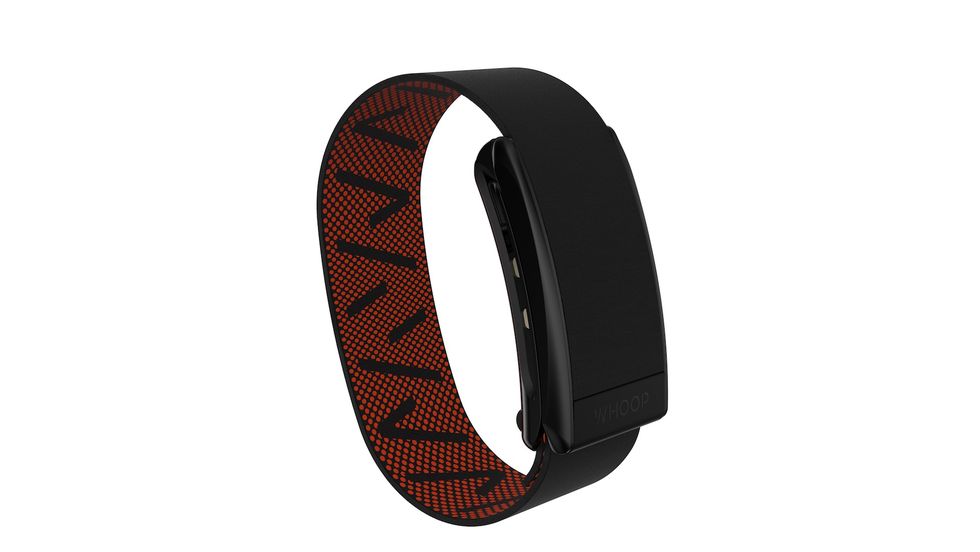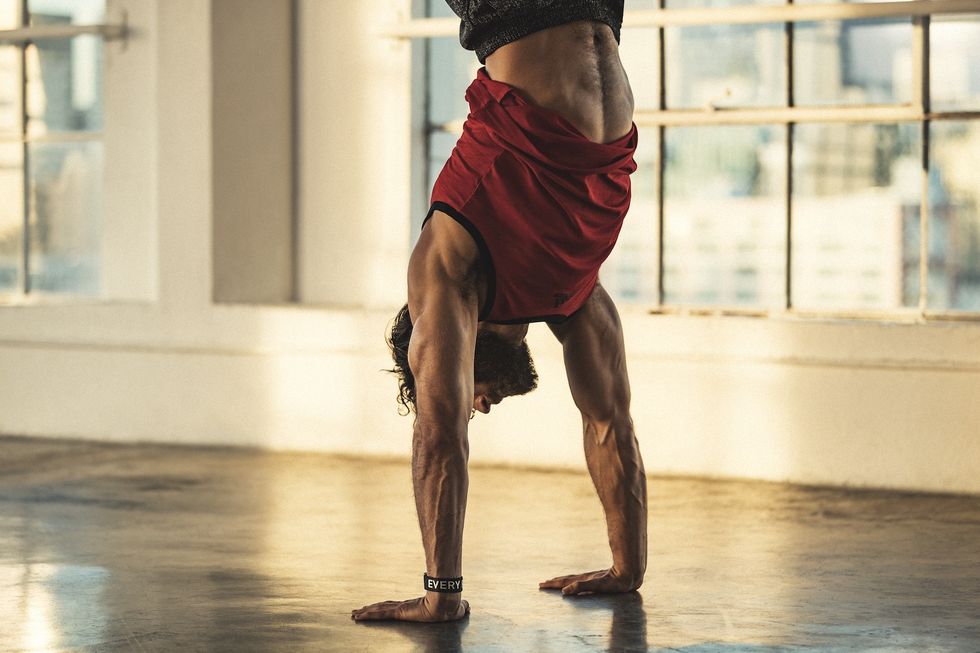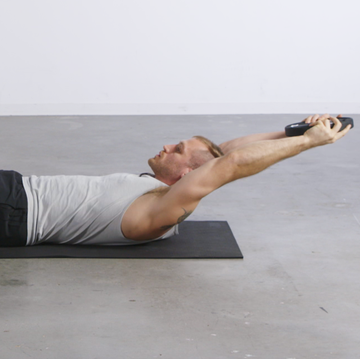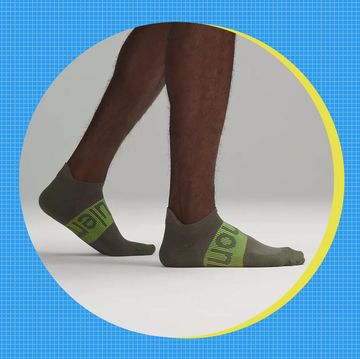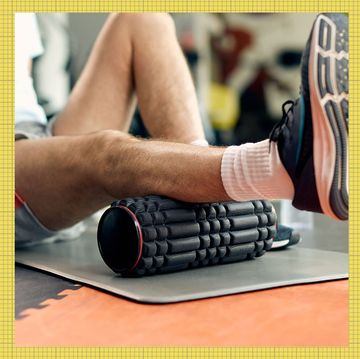"The good news is, you fall asleep relatively fast," performance specialist Joe Holder tells me, scanning a computer screen filled with multicolored graphs of sleep, workout, and recovery data.
We're looking at weeks of biometric information collected by my Whoop strap, the super-powerful wearable beloved by professional athletes, who depend on its readings to fine tune their recovery for optimal performance. Whoop was the first wearable allowed on the field by the MLB, and the NFLPA made it the organization's official recovery wearable. While it's not expressly allowed on pro basketball courts, NBA players keep getting caught sneaking them into the game under sweatbands.
Many of those little bars are red, which, as you might guess, isn't good. But Holder makes me feel at least a little better with his expert analysis. "You're lucky because you get a decent amount of slow-wave, which is when you're body recovers the most, muscle-wise," he continues. "You probably just don't sleep enough."
I generally don't have much of a clue about what I should do with all the stats I'm logging when I workout with wearables. The gadgets are cool, and I feel like I'm hacking my own body with all the data I'm getting—but I have little insight on how to best apply most of the numbers to actually improve my workouts and lifestyle.
If you've strapped on an Apple Watch or Fitbit over the last few years, you've probably felt the same frustration. Other than heart rate and step count, everything else is just a static number without context. Whoop is probably the best tracker of the bunch, with its streamlined Strain, Sleep, and Recovery scores built into its app—but it's still difficult to know exactly how those numbers should be applied in the real world.
The pro athletes who have embraced Whoop probably know a little more than the layman about what these numbers mean, but they also have some extra help: Coaches and institutional programs that help them understand the data and apply those lessons to their workouts and lifestyle. When I reviewed Whoop last year, this need for expert analysis was one of the few negative comments I had about the device.
Membership Perks
Now, Whoop is addressing that need and rolling out a consumer membership package that will give normal exercisers their own coach. The subscription costs $30 per month with a six-month commitment, which comes out to $180 upfront. Monthly fees begin after the initial period is over.
That's by far the lowest entry point ever offered by the company, which used to sell the straps for a steep $500 a pop. Starting today, the subscription service is the only way you'll be able to get a Whoop on your wrist—but those who bought a strap before the shift will be rolled into the new service, sans fees.
Whoop founder Will Ahmed emphasizes that monthly fee is about the same price as a single group fitness class at a fancy studio, which could justify the cost for fitness addicts who hit boutique spin classes or CrossFit boxes multiple times a week.
The real value, though, comes with the feedback wearers will receive as part of the membership. Ahmed tells me the service will include weekly reports with feedback about all of the data the strap collects, which will supplement the analysis already available on Whoop's connected app and dashboard. Members will also be able to connect with customer service reps for more guidance, giving everyone the same type of breakdown Holder provided me in-person.
"We're effectively introducing a 24/7 coach as a service," Ahmed says.
Whoop with a Group
The subscription service will also allow users to join groups and teams with other users, introducing a brand new social component to Whoop.
Members will be able to track their best performances against those of likeminded athletes, allowing people to push each other in their workouts even if they can't physically exercise together. These dashboards are one of the reasons Whoop has been embraced by universities as a component of team strength training and conditioning programs—so competitive consumers will likely be quick to embrace the community aspect of the service if it offers the same type of health gamification.
Whoop's new service won't discriminate against those who aren't looking to join a team, though, especially if they're concerned about how much they'll have to share with the community. Ahmed says that users will be able to decide exactly how much of their data they want to share, and with whom—although as always, privacy should be a top concern.
Ahmed couldn't offer many more specific insights about the community aspect of Whoop other than suggesting that forums will be a big part of the experience, since the community has yet to be formed with the service just now rolling out.
At the end of my data consultation with Holder, I didn't have any new information about my fitness routines, but I did have a ton of new insights to apply going forward. That's really the promise of wearables—one has long gone unfulfilled by other gadgets, in my experience.
If Whoop's new service can offer that same experience I had with Holder to dedicated gym-goers, it'll be well worth the monthly cost. They'll have new ways to measure their performance and communities to keep them engaged in their workouts, too. If you're content to track your 10,000 steps a day, stick to the basics. If you want more, Whoop might just be for you.

